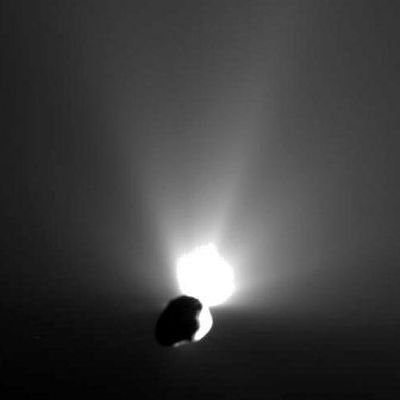Collision in space a grand slam

The deliberate crash of a NASA probe into a comet was a smashing success, scientists say, producing a display of celestial fireworks worthy of the Fourth of July.
At 10:52 p.m. PDT Monday, the $333 million Deep Impact mission’s “impactor” probe struck within 200 feet of its target on Tempel 1, a comet 83 million miles from Earth.
The probe hit the city-size comet at 23,000 mph with a force equivalent to 4 1/2 tons of TNT.
The brightness of the impact still was flaring 45 minutes after the probe had dug “presumably a large crater,” said mission chief scientist Michael A’Hearn of the University of Maryland.
That suggests the comet’s interior is a block of ice and dirt undisturbed since the dawn of the solar system 4.6 billion years ago, A’Hearn said in a briefing at NASA’s Jet Propulsion Laboratory in Pasadena, Calif.
Scientists long have debated whether comets are giant rocks or are more porous.
The impactor was vaporized, but it delivered pictures of the comet up to three seconds before its demise, said Rick Grammier of the National Aeronautics and Space Administration. The probe captured images of an asteroidlike surface with craters and ridges.
The shielded mother ship survived a 310-mile pass by the comet, sending images of the impact back to Earth, Grammier said.
“They’ve pulled off a really difficult mission in great style,” said astronomer Paul Feldman, a member of the Hubble Space Telescope team who watched the impact, joining dozens of observatories both in orbit and on Earth. Hubble observed a “fan” of material still emerging from the impact site 70 minutes afterward, Feldman said.
“It certainly didn’t look like a loosely packed snowball from up close,” Feldman said. “Some of those hills looked like spots where you could go skiing.”
Deep Impact mission scientists hope to learn about the chemistry of the early solar system and the conditions that led to the formation of planets such as Neptune and Pluto.